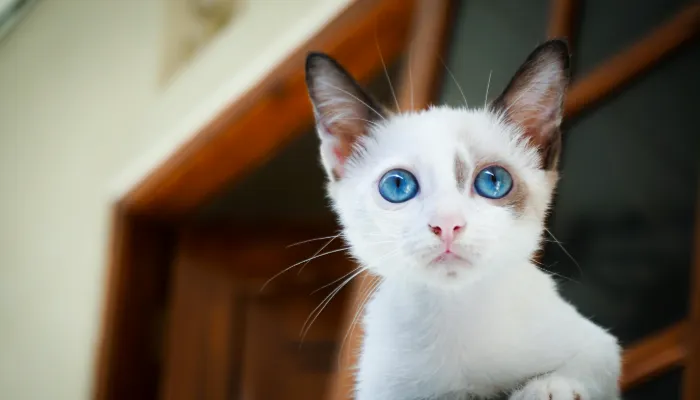Have you ever contemplated how do cats say “Yes”? The animals have a unique form of communication unlike any other. Affirmative responses for cats do not include the use of any words. Instead, they blend body movements, sounds, and energy to get their point across. For every cat owner, knowing these signals is helpful as it strengthens the bond with their furry loved one.
Now the more daunting query is, how do cats say “yes”? Let’s explore the captivating realm of cat communication with a cat translator.

Decoding the Language of Cat Sounds
Purring has a distinctly recognizable sound or pattern, and every sound made by the creature has its own purpose. While ascertaining how the feline family of animals responds positively, there are particular sounds that come into attention. A concise explanation includes:
- Purring: One way in which cats substantiate their approval or happiness is through purring. So yes, when your cat purrs when being pet, then to some degree it is appreciative.
- Meowing: Communication between cats does not include the utterance of meowing, however, meowing does get used when talking to their owners. A purring sound that is gentle could suggest that the cat is in agreement or has recognized your presence.
- Chirping or Trilling: Cats make these sounds when they are overjoyed and are in high spirits. This might be their way of showing agreement or simply greeting you.
This is an example of a cat saying “Yes”. This is one of the myriad ways cats communicate, which sometimes is enhanced with a pitch for emphasis. By listening to these sounds, you’ll know when your cat is trying to give you an affirmation.
Uniqueness In Communication Of Cats
Cats do not speak English or any human language, so they express agreement and acceptance differently. If you are asking, “how do cats say “Yes”?”, pay close attention to these body language signals:
- Tail Position: When the tail is straight up, cats are often in good spirits. This can be a form of “Yes” harmony with what is currently happening in their surrounding world.
- Ears: Ears have a lot to say about a cat’s feelings. Ears raised forward indicate curiosity, which many times means agreement or acceptance.
- Eyes: In fact, cats use their pupils to communicate, so for example, if your cat is looking at you with few blinks, it is an assurance that they trust you. Rather, slow blinking indicates comfort and affection.
Knowing your cat’s physiology will assist you in recognizing their different forms of communication, and for example, “Yes”, means “yes”.
How Do Cats Use Their Surroundings to Say “Yes”?
Apart from sounds and movements, cats can also make use of their environment to communicate agreement. So you might notice that:
- Following You: If your cat is behind or beside you, it simply means they are happy with whatever is going on and so wish to show their tacit approval.
- Jumping On Your Lap: For your cat, this gesture affirms a ‘YES’ response! Jumping on you is a way of showing that they are comfortable and wish to be close to you.
- Rub Against You: This is done to show affection. Also, as the cat in the wild rubs up on other animals to mark territory, they are showing allegiance to you, signifying their agreement.
Those little gestures are part of how do cats say “Yes” and show that they are comfortable with you. Cats additionally elevate their feelings when they incorporate the context into their behavior.
Signs of Affirmation in Cats
So, what are the more apparent ways through which cats say “Yes”? Let us look at some categorical examples:
- Nuzzle or Nuzzling: This is a form of affectionate head contact and a way for cats to say yes to your presence.
- Rolling Over: A cat rolling over onto its back with its belly up is a representation of trust and submission. That is a yes to your company.
- Kneading: When put at ease, a cat starts kneading with its paws. If a pet cat kneads on you, that is a way of saying yes, I’m comfortable here with you.
The aforementioned gestures, like head butting and cat kneading, are the most common ones through which cats show their approval. This is a huge tell on how your pet cat feels toward you and the time shared together.
Conclusion
So how do cats say “yes”? It is a mix of sound, movement of the cat, and behavior. By learning these signals, deeper connections with your cat’s feelings and thoughts become possible. As shown, a purr, a gentle flick of the tail, or even a casual headbutt can all signify that your cat is in agreement with what is being discussed. Without any shadows of doubt, by constantly paying attention to these signs, you will always have the answer to what your feline means when saying “yes.”
Knowing how your feline friend communicates to say, “yes”, will go a long way in establishing full-fledged relationships with your feline buddy. By paying attention to their articulation, both of you will come to appreciate one another, which will elevate the level of comfort and happiness in your household.
